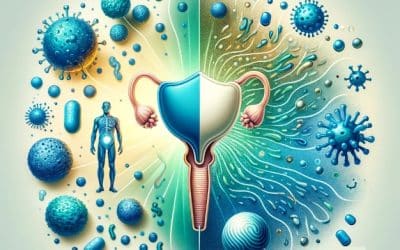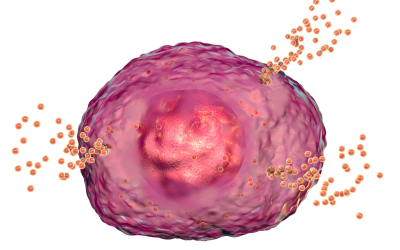The dietary phytonutrient I would like to discuss in sulforaphane. The reason is simply, I did not know much about this nutrient, even though it was often discussed in many blogs and articles. “Although the plant kingdom is the source of thousands of phytochemicals, little is known about the way in which food-derived phytochemicals support the maintenance of human health and especially those associated with cellular defense mechanisms” (Houghton, Fassett, & Coombes, 2016). As the science of nutrigenomics evolves and our understanding of the many interactions between phytochemicals and endogenous cytoprotective mechanisms grows, the significance of plant foods in human health is becoming appreciated among the health community. The interlinked science of nutrigenetics and nutrigenomics give us the ability to reveal genetic polymorphisms which many compromise an individual’s biochemical function, providing a more targeted opportunity to personalize a treatment program. The discovery that food-derived molecules are in constant conversation with the complex intracellular control systems via signaling pathways has revealed that food is much more than a source of micro- and macro-nutrients. The health benefits of popular polyphenolic phytochemicals, such as those found in green tea, grape seed, red wine, curcumin, pomegranate and olives function hormetically, and their mechanisms out weight much more than their antioxidant capabilities.
What is sulforaphane?
The classification of cruciferous vegetables includes species from the Brassicaceae genus, and this includes Brassica oleracea including broccoli, cabbage, cauliflower, brussels sprouts and kale, but also Raphanus genus which includes types of radishes. The most researched cruciferous vegetable is broccoli (both vegetable and sprouts), a “source of bioactive compounds with nutrigenomic potential” (Houghton et al., 2016). Although these vegetables can provide a good source of micronutrients, their value to human health can be attributed to the glucosinolates, which when enzymatically hydrolyzed, are capable of modifying gene expression (Houghton et al., 2016). Broccoli plants contain a very important isothiocyanate (ITC) called sulforaphane.
Genes impacted
Sulforaphane has been found to be a potent Phase II detoxification enzyme inducer, including enzymes such as NQ01 and the family of GST’s, both required for the detoxification of steroids and environmental toxins (Houghton et al., 2016). In fact, the NQO1 inducer potential of broccoli-derived sulforaphane was highest when compared to the ITC’s of cabbage, kale, and turnips, which may explain why broccoli is researched more extensively than other Brassica vegetables. Additionally, in data from studies comparing the NQO1 inducer activity, sulforaphane demonstrated the highest value. “The comparative NQO1 inducer activity of these phytochemicals is sulforaphane > andrographolides > quercetin > curcumin > silymarin > tamoxifen > beta-carotene > genistein > lutein > resveratrol > I-3-C > chlorophyll > 𝛼-cryptoxanthin > zeaxanthin” (Houghton et al., 2016). The induction of the detoxification enzymes by sulforaphane is associated with anticarcinogenic effects of broccoli.
Sulforaphane is also an inducer of Nrf2 target genes and belongs to one of the nine identified classes of chemical Nrf2 activators. Nrf2 is known as the “Master Regulator” of Cell Defense (Houghton et al., 2016). “It is a master regulator of a diverse set of more than 200 cytoprotective genes encoding proteins that neutralize and detoxify both endogenous and environmental toxins, regulate factors in cell cycle and growth, and facilitate the maintenance of a high quality proteome” (Lewis, Mele, Hayes, & Buffenstein, 2010). There are a broad range of genes that Nrf2 targets, and these include those coding for cytoprotective proteins, antioxidants, drug-metabolizing enzymes, heat shock proteins, growth factors, and heavy metal binding proteins. Vitamin D receptor (VDR) is also an Nrf2 target gene induced by sulforaphane. One of the most important roles of Nrf2 is in the ability to regulate GSH biosynthesis and detoxification through direct regulation of GCL and NQ01 (Lewis et al., 2010). Nrf2 also participates in the inflammatory response, repressing multiple pro-inflammatory genes including TNF-a, IL-1b and IL-6, cell adhesion molecules, prostaglandin metabolites, matrix-metalloproteinases, and inducible nitric oxide synthase (Lewis et al., 2010). Nrf2’s participation in the inflammatory cycle appears to have benefits on cardiovascular function and also protects arterial endothelial cells from inflammation (Lewis et al., 2010)
Some of the direct benefits GSH biosynthesis(Lewis et al., 2010):
- Increases cell’s ability to scavenge ROS
- Increase elimination of xenobiotics
- Inhibits the formation of free radicals, preoxynitrite formation and NO induced neuronal apoptosis (neuroprotectant)
- Important reservoir for cysteine (a cofactor in metabolism, hormone biosynthesis, and conjugation in GST-mediated detoxification)
Clinical applications
Sulforaphane is the cruciferous plant’s natural insecticide (Goffe, 2019). Plants of Brassica genus contain glucoraphanin (GRN), an inactive precursor compound that is activated with myrosinase (MYR) enzyme through cutting, chewing and disrupting the broccoli plant cell structure to initiate the synthesis of sulforaphane (Houghton et al., 2016). In fact, when the insect chews the plant, the GRN and MYR that are separated into different compartments come into contact to result in an enzymatic reaction, yielding SFN (Joffe, 2019).
“For consumers to take advantage of the cytoprotective benefits of broccoli and other crucifers, steps must be taken to conserve the integrity of the sulforaphane released”(Houghton et al., 2016). It is important that proper preparation methods are applied and that bioactive supplements are chosen. For example, five minutes of microwave cooking results in 74% loss of glucosinolates while high pressure boiling leads to 33% loss. Fresh broccoli is also believed to have 10x more sulforaphane than frozen broccoli since the freezing process may destroy MYR. Heating can decrease epithiospecifier protein (ESP) activity and increase sulforaphane formation in broccoli; too much heat will break down MYR too much and reduce sulforaphane content. It is recommended to steam 1-3 minutes to preserve sulforaphane in the broccoli. Microwaving is recommended at 30-45s with a 900W microwave. Boiling will destroy MYR.
Commercial attempts to produce sulforaphane releasing supplements have resulted in mostly forms with little or no bioactivity. In addition, the majority of available broccoli sprout or seed supplements contains the precursor GRN, but the MYR has been deactivating it. That means the supplement really does not contain sulforaphane. “The ideal sulforaphane-releasing supplement would retain GRN and MYR enzyme in the form of a whole broccoli sprout with nothing but water removed” (Houghton et al., 2016).
One way to obtain the benefits of sulforaphane listed is to eat the broccoli sprouts. It eliminates the problem that may occur with supplements that do not have the adequate levels of MYR to enzymatically activate sulforaphane. I recently bought this kit I am going to try to make them myself.
To learn more about healing form IC naturally, please visit our website: https://ichealer.com If you are looking for self healing, we recently launched our Self Healing IC Course featuring 10 hours of video designed to help you discover your root cause. Once you know your root cause, you can start your healing journey. To find out more information about our exciting new course, please find the information below:
Here is the link to preview the course: https://ichealer.com/online-course/
Here is the Podia Course Page: https://ichealer.podia.com/course
The first module is totally FREE. You have nothing to lose and everything to gain. For more insightful videos on these burning topics, simply subscribe to this page so you can be notified of up to date information.
Join us on Facebook https://www.facebook.com/IC-Healer-103255207780907/
Instagram https://www.instagram.com/ichealerofficial/
Twitter https://twitter.com/ic_healer
References
Houghton, C. A., Fassett, R. G., & Coombes, J. S. (2016). Sulforaphane and Other Nutrigenomic Nrf2 Activators: Can the Clinician’s Expectation Be Matched by the Reality? Oxid Med Cell Longev, 2016, 7857186. doi:10.1155/2016/7857186
Joffe (Y.) (2019) Food, Gene Expression, and Diet [Power Point] Retrieved (2019, June 14) from https://learn.muih.edu/courses/8262/pages/week-8-resources?module_item_id=251802
Lewis, K. N., Mele, J., Hayes, J. D., & Buffenstein, R. (2010). Nrf2, a guardian of healthspan and gatekeeper of species longevity. Integr Comp Biol, 50(5), 829-843. doi:10.1093/icb/icq034
MyBiohack (n.d.) The 15+ Benefits of Broccoli Sprouts and Sulforaphane (And How to Prepare Them). Retrived (2019, June 14) from https://mybiohack.com/blog/the-15-benefits-of-sulforaphane-glucoraphanin-broccoli-sprouts-nrf2-cancer-longevity-aging-cooking








